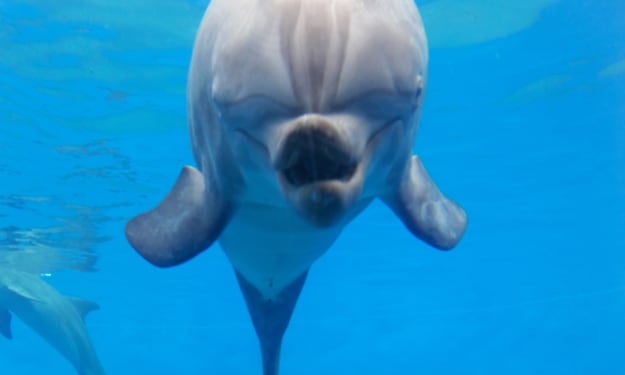New Calf Born to L-Pod
After an uncertain year that saw three members of the Southern Resident orca community, including a newborn calf, die, L-pod has been sighted with a new calf to bring hope to this troubled orca population.

During a routine survey done on the endangered Southern Resident orca community on Friday, a newborn calf was spotted alongside its mother and family, which made it become the first calf to have been successfully born into the population in over three years.
Scientists at the Washington State-based Center for Whale Research confirmed to a number of news outlets throughout the country that the calf, who appears to be healthy, was born to L-77, a 31-year-old female who is a member of the L-12 sub-pod, which is believed to be a part of the L-25 matriline. This pod was once led by its namesake L-12, who was also known as Alexis, an orca matriarch who was believed to have been born in 1933. This particular pod is known to spend more time in inland waters compared to other L pod-based families. In addition, they are also known for having close ties to both the L-28 and L-32 matrilines as well.
Who is Matia?
Currently, the oldest member of the L-12 sub-pod, Matia, who is known as L-77, is the mother of two known calves. Her first known calf, L-114, was born in 2010 but died during the first year of life while her second calf, L-119, also known as Joy, was born in 2012 and is currently thriving.
The calf who was sighted on Friday is her third known calf. Matia herself has been the matriarch of the L-12 pod since the death of her grandmother, Alexis, in 2012.
This pod now consists of her younger sister Calypso (L-94), her two calves, and an older brother named Mega (L-41), who was born a year after the researchers began to study the Southern Resident orca population.
What about the calf?
While the researchers believe that the calf, who has been dubbed as L-124, is currently healthy, its gender is unknown. However, this little guy will not receive an "official" name of its own until it has survived its first year of life. This is because it's believed that about 40 percent of all newborn orca calves do not survive their first year, but the researchers have high hopes that the calf will live long enough to see adulthood.
If this calf is a female like its sister, this would mean that L-124 would have great potential to contribute a calf to this endangered orca population.
What would that mean for the Southern Resident Orcas?
As of the birth of this calf, the Southern Resident orca population is now totaled to around 75 animals. In fact, the calf's birth can serve as being good news since it has been reported that this particular population is at its lowest it has been in more than three decades. In addition, this population is about five years away from having some of its main breeding females lose their reproductive abilities.
While wild captures of various animals from this population for western aquariums have impacted this population during the 60s and 70s, the resident orcas are currently facing threats relating to pollution, the loss of wild salmon populations, and noise pollution from vessels.
Over the summer, about three members of this particular population died starting with the death of L-92, also known as Chewster, in June. A month later, J-35, who is also known as Tahlequah, made international headlines when she gave birth to a calf, who died shortly after birth. From there, she spent the next 17 days carrying her dead calf by balancing it on her head.
When the death of a newborn calf was proving to be too much of a brutal burden for the Southern Residents, another blow came in August when researchers confirmed that J-50, also known as Scarlett, was sick as a result of starvation. At the time, the United States National Marine Fisheries Service was considering the possibility of locating her to a sea pen for rehabilitation with intentions to release her back to her pod if all went well after attempts to medicate her in the wild failed. However, this plan was made impossible thanks to the opposition of animal rights extremists. She died that following September.
Is there hope?
Because none of the three main pods that exist within the Southern Resident population have been unsuccessful in having calves that have survived their first year of life, the researchers are taking caution over the possibility that L-124 might meet the same fate as the other recent calves.
In addition to this recent birth, there are also some new concerns about the other surviving animals as well. Right now, J-pod matriarch J-17, who is also known as Princess Angeline, is showing signs of severe malnourishment along with K27, a 27-year old male, who is also known as Scoter. Both animals have shown signs of a condition known as a peanut-head syndrome.
While the Southern Residents are nowhere out of the woods yet, we can only hope that the birth of L-124 will bring hope to this long-suffering population if efforts are made to protect their food source, monitor all boating activity, and find better alternatives to PCBs and other harmful chemicals that are affecting their fertility.
About the Creator
Jenna Deedy
Zoo and Aquarium Professional, Educator, Cosplayer, Writer and B.A. in Psychology whose got a lot to share when it comes to animals, zoos, aquariums, conservation, and more.
Instagram: @jennacostadeedy






Comments
There are no comments for this story
Be the first to respond and start the conversation.